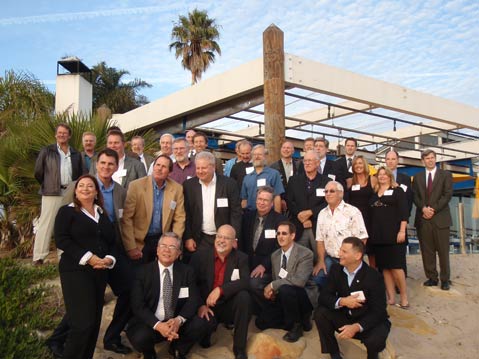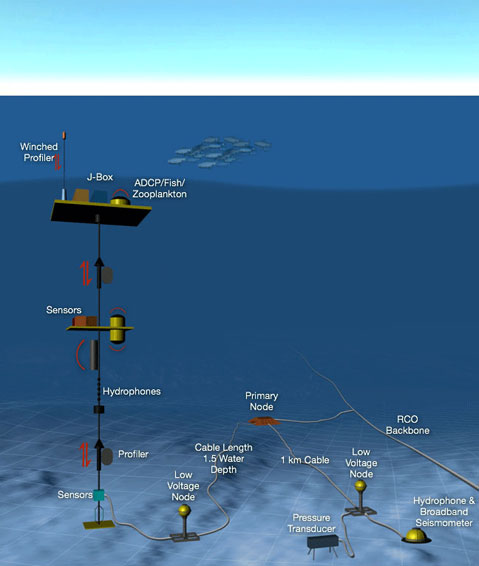Goleta’s Maripro to Install Ocean-Floor Observing System
Equipment to Revolutionize Oceanography

The National Science Foundation, along with Goleta-based L3 MariPro and University of Washington, have teamed up to install a vast network of ocean-observing sensors and mobile robots that will revolutionize oceanography by broadcasting activities of the ocean floor through the Internet.
The equipment will be installed throughout the Juan de Fuca Plate of the Oregon and Washington coasts, with the University of Washington leading this component of the project. During a kickoff ceremony on November 9, at the Beachside Bar and Cafe next to the Goleta pier, members of all the groups celebrated the agreement. Peter Barletto, director and chief operating officer of the National Science Foundation’s Ocean Observatories Initiative: Regional Scale Nodes [RSN] program, said it will “open opportunities for MariPro : People worldwide are waiting to see how it will work for us so they can install RSNs too.”
Barletto summarized the benefits of the project, to which $384 million in federal funds, for the next five and a half years, has been dedicated: “Immediate benefits are jobs created in design and construction. Amazing transformation of ocean science is to come. RSNs will raise consciousness of global citizens about the ocean.”

The way John Delaney, RSN program director and principal investigator, sees it, if the launching of the first satellite, Sputnik 1, by the Soviet Union in 1957 was the first big step in communication, then the implementation of RSNs throughout is the next major advancement in global communication. Delaney predicted that 15 to 20 years from now, some dozen countries worldwide will have installed RSN on their coasts. He has been passionately working with the project for 15 years, and said he was “absolutely ecstatic” about having finally achieved the financial agreements necessary to mobilize construction of RSNs.
Mike Kelly, assistant director of RSN, who formerly captained ships that installed cables on the sea floor, and after that ran a global telecommunications program, is confident that the project will be extremely popular. “People are really interested in the ocean,” he said. “Now, anytime, you can go onto your computer and see the ocean floor. In maybe 10 years, people can be down four miles below the surface of the ocean.”
Kelly explained that “instead of installing cables from, for example, L.A. to Japan – straight from one coast to the other – the RSNs will stop throughout the ocean floor,” and underwater robots will connect high definition cameras on the ocean floor to the Internet. Kelly’s role will be in the technical installation and operation of the network, and the monitoring of the Internet connection. “It’s not just good for science, but also for people all over the world.”
Representing Congressmember Lois Capps (who would have attended the ceremony were she not in Iraq), Johnathan Saur read a statement on her behalf, calling the project “yet another example of how the American Recovery and Reinvestment Act will create jobs and help advance cutting edge research and innovation on the South Coast.” The note outlined benefits of the collaboration: “The ocean-observing system will help us better understand the ocean : monitor our changing climate, preserve important ecosystems, and maintain the health of the regions’ fishing grounds.”
The kickoff ceremony was certainly more of a celebration than a business meeting, and everybody involved, from the engineers at L-3 MariPro to the University of Washington and RSN personnel seemed passionate and optimistic about the progress and developments to come.



